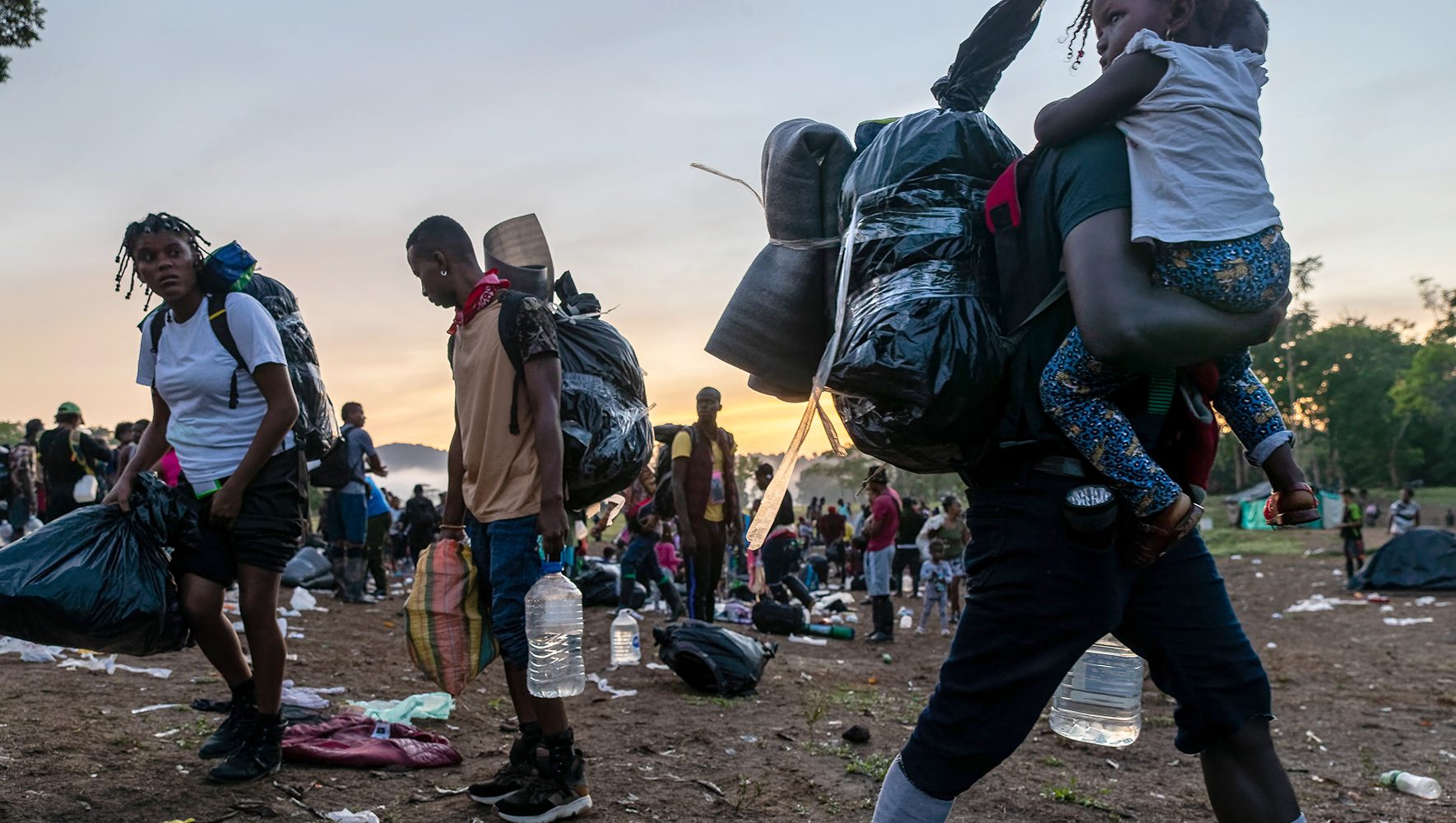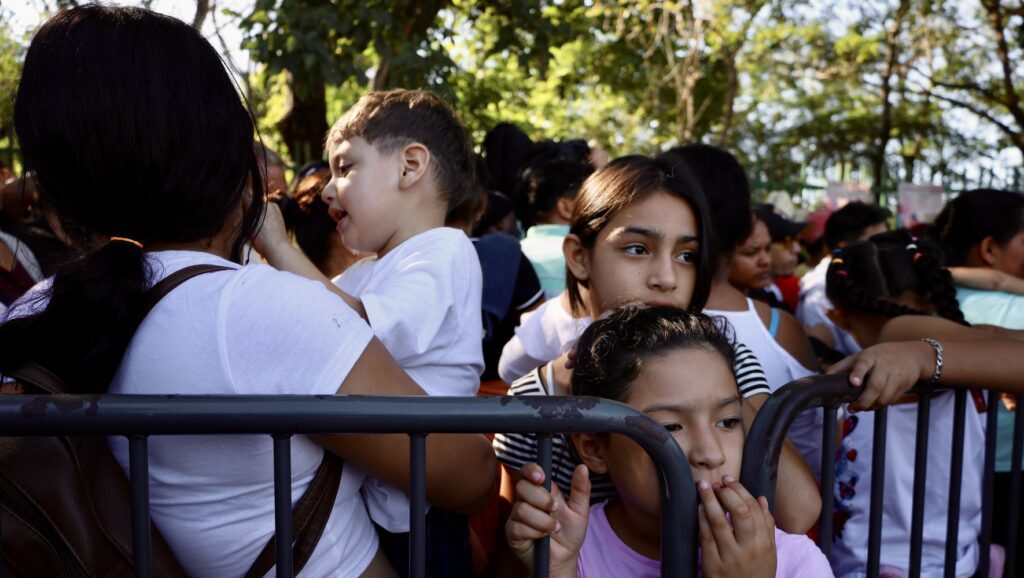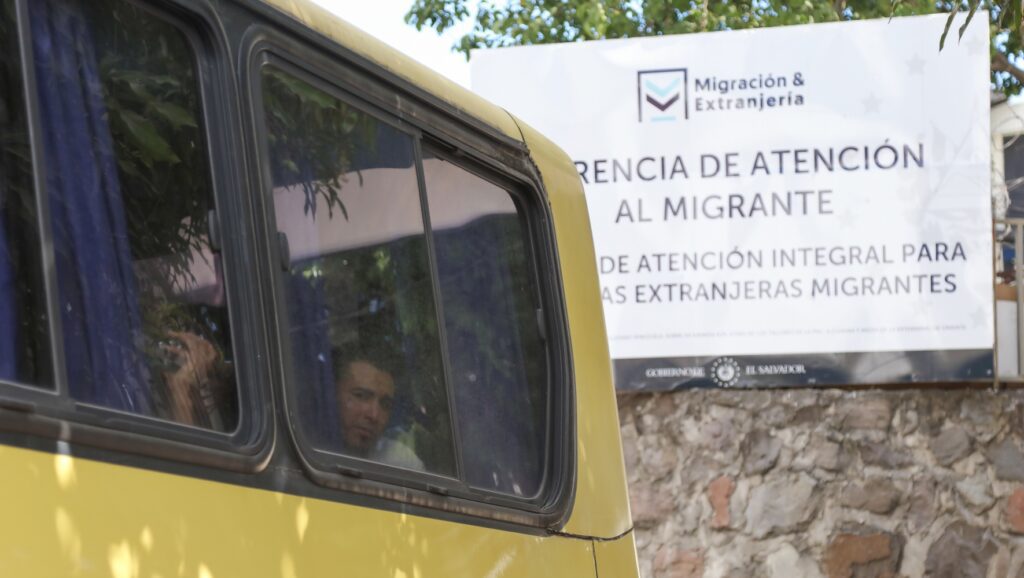
On May 11, enforcement of Title 42, a public health measure invoked in 2020 to block people from seeking asylum at the U.S.-Mexico border, ended along with the U.S. COVID-19 public health emergency declaration. In its place, the Biden administration enacted several policies that impact asylum and migration, one of which was a virtual asylum ban.
Under the new rule, asylum seekers can only apply for asylum after entering at the U.S.-Mexico border if they present themselves at a port of entry after making an appointment using the Department of Homeland Security’s (DHS) mobile application, CBP One, or if they can prove that they have sought and been denied asylum in a country through which they traveled on their way to the United States.
The changes represented an abrupt policy shift — but may, in the end, have only been fleeting. On Tuesday, a federal judge in San Francisco issued a decision vacating the Biden administration’s asylum ban, citing in part comments submitted to the federal record in opposition – HIAS supporters submitted over 5,000 such comments. The future of the asylum ban remains uncertain. The judge granted a 14-day stay before the order takes effect, but the government plans to appeal to the ninth district and will likely ask for a longer stay while the case is ongoing.
To understand what the most recent ruling may entail, it’s first necessary to examine what has changed in the two months since the end of Title 42. The Biden administration’s asylum ban has had a profound impact not only at the U.S.-Mexico border but throughout the entire Latin America and Caribbean (LAC) region, where HIAS operates over 70 field offices across 11 countries.
Here are some of the impacts we are seeing on asylum seekers, migrants, refugees, other displaced populations, and host communities in the region:
Many displaced people are still on the move near the U.S.-Mexico border and throughout the LAC region, even as U.S.-Mexico border crossings have dropped significantly.
The much-publicized drop in the number of displaced people crossing into the United States belies a rising amount of movement throughout the Americas. A combination of political instability, increased gang violence, ongoing economic struggles, a slow recovery from COVID-19, and the effects of climate change have driven this increase, sparking repercussions in multiple countries in the LAC region. In northern Mexico, for instance, an estimated 104,000 migrants are currently stranded in border towns in hopes of gaining entry to the United States.
One important marker of migration trends is the Darién Gap, a dangerous and roadless expanse of rainforest connecting Colombia and Panama that has increasingly served as a migration route in recent years. An estimated 200,000 people, largely from Venezuela, Haiti, and Ecuador, crossed the Darién Gap between January and June 2023. If current trends continue, a record 400,000 may cross by the end of the year. This would represent a sharp increase from the 250,000 people estimated to have crossed in 2022, itself nearly double the 2021 figure.
Mexico’s migration authority (INM) also reported an increase in detentions of migrants in May 2023 over the previous month, with more significant increases seen in Chiapas and Tabasco, two border states between Mexico and Guatemala.
The asylum ban isn’t solely responsible for the drop in U.S.-Mexico border crossings.
Despite the continued high level of migration in the region, the decrease in U.S.-Mexico border crossings is nonetheless significant: In June 2023, the first full month since the end of Title 42, the number of people crossing the border between ports of entry was lower than in any month since February 2021 — a change that the U.S. Department of Homeland Security directly attributed to the asylum ban.
But the truth is far more complex. After interviewing 300 people waiting to seek asylum at the U.S.-Mexico border, Human Rights First found that they overwhelmingly did not know about the asylum ban, or had an incomplete understanding of the rule and its consequences — which undermines the claim that the asylum ban itself is deterring people from crossing. Additionally, the rate of Mexican nationals crossing the border between ports of entry has also fallen, even though Mexican nationals are not subject to the asylum ban.
One cause for these lower numbers is the end of Title 42. Under Title 42, ports of entry were almost completely closed to asylum seekers, which led to larger numbers of people crossing between ports of entry out of desperation. Since Title 42 was lifted, there has been a 27% increase in the number of people being processed through ports of entry. With consistent (if limited) access to these channels, fewer people need to resort to these more dangerous routes across the border.
Additionally, some countries in the LAC region have reacted to recent changes to U.S. migration policy by introducing regulations and measures that negatively affect people on the move, including increased border controls and stricter migration policies. HIAS Peru staff have observed increased controls along the border with Chile, leaving hundreds of people stranded on their journeys. INM officers have also been observed controlling and restricting access to the U.S.-Mexico border, which may contribute to the lower numbers.
“Reports from partners on the ground tell us that INM officers often prevent migrants from approaching ports of entry, sometimes even if they have CBP One Appointment confirmations,” said Vanessa Dojaquez-Torres, policy counsel at HIAS, who observed such behavior during a visit to the Mexican border city Ciudad Juárez in late May. “While the Department of State has denied having requested that INM take this position, we have heard that INM officers understand these actions to be at the request of the U.S. government.”
“Reports from partners on the ground tell us that INM officers often prevent migrants from approaching ports of entry, sometimes even if they have CBP One Appointment confirmations.”Vanessa Dojaquez-Torres, policy counsel at HIAS
Shifting dynamics in migration are putting a strain on LAC countries’ capacities.
HIAS President and CEO Mark Hetfield said in his testimony before Congress in May 2023 that the U.S. is “just one player in this global refugee crisis,” with countries across the hemisphere hosting large numbers of displaced people: about 21.5 million displaced people — nearly one in five worldwide — are in the Americas. Shifting migration patterns have exacerbated the challenges faced by LAC countries, placing additional strain on their already limited resources. HIAS staff in Mexico and Costa Rica have seen more people living on the street or in improvised camps as shelters in the area reach capacity. In Necocli, Colombia, HIAS staff report that many people in transit are camping on beaches.
The increased pressure on host communities has also led to rising social tensions, discrimination, and xenophobia, worsening the vulnerabilities faced by forcibly displaced populations. HIAS Mexico and HIAS Costa Rica have reported tensions among local populations and people in transit, especially those living on the street or in improvised camps. During a recent trip to Ciudad Juarez, HIAS staff were told “the people of Juarez used to be much more welcoming but now, when bridges get closed, they get angry.”
The asylum ban’s provision requiring asylum seekers to have previously applied for asylum in transit countries may also lead to a surge in asylum requests throughout the LAC region, adding to the strain on the countries’ asylum systems. According to UNHCR, Mexico had registered 64,462 new applicants for refugee status by the end of May 2023, a 30.5% increase from May 2022.
In an effort to help address displacement in LAC, the U.S. is working in partnership with countries in South and Central America to open Safe Mobility Offices (SMOs) that direct refugees and migrants to lawful pathways to travel to the U.S. and provide them with safe alternatives to traveling to the U.S.-Mexico border to seek safety. SMOs in Colombia, Guatemala, and Costa Rica are now providing services to people from a limited number of nationalities. However, concerns remain about the ability of partner countries to adequately handle the expected caseload and provide necessary support services. As of this writing, both the Colombia and Guatemala SMOs have closed applications for appointments due to high demand and lack of clarity around processes.
The bottom line
Changes to U.S. migration policy and their ripple effects throughout the LAC region have harmed asylum seekers, migrants, and other displaced people and placed increased strain on host communities. Despite its intention to foster a coordinated approach among governments in the hemisphere, including the U.S., the Los Angeles Declaration has fallen short of this goal so far, impeding the region’s ability to address pressing issues collectively and hindering progress towards comprehensive solutions. The Los Angeles Declaration should be lifted up and utilized as intended to ensure that proper steps are being taken to humanely address migration flows in Latin America and the Caribbean, including through engagement with civil society and NGOs.
HIAS applauded the judge’s decision to rescind the Biden Administration’s asylum ban, which places inhumane and unnecessary restrictions on asylum seekers. Any true reforms to the U.S. asylum system must protect the rights and dignity of all noncitizens seeking safety. But the ruling, in itself, is no panacea.
We also call for humanitarian infrastructure at the U.S. border to be properly resourced. As the root causes of migration continue to increase, so do the humanitarian needs of asylum seekers and other migrants heading north to the U.S.-Mexico border. The solution to this is not increased immigration enforcement, but comprehensive immigration reform passed by Congress that takes into account the multi-layered humanitarian issue at hand.


